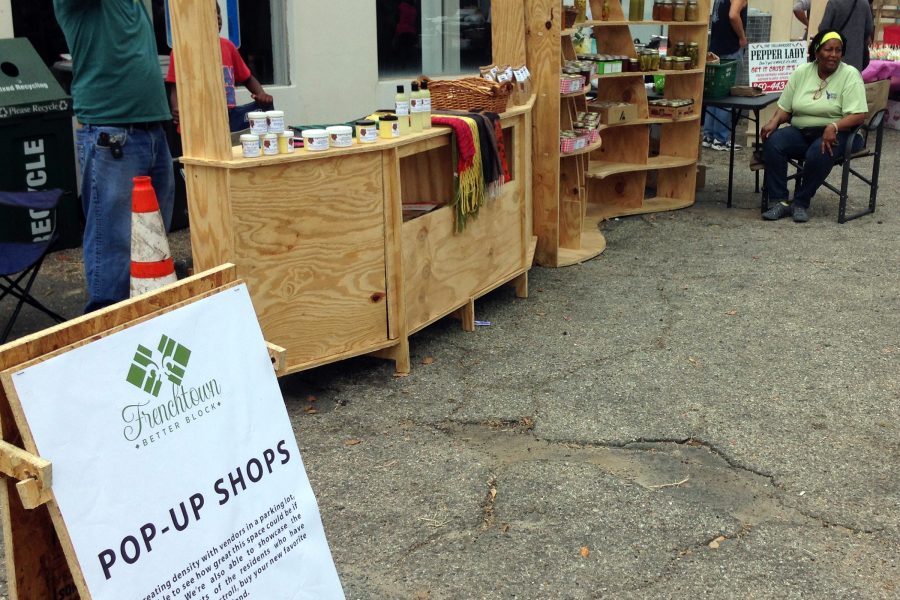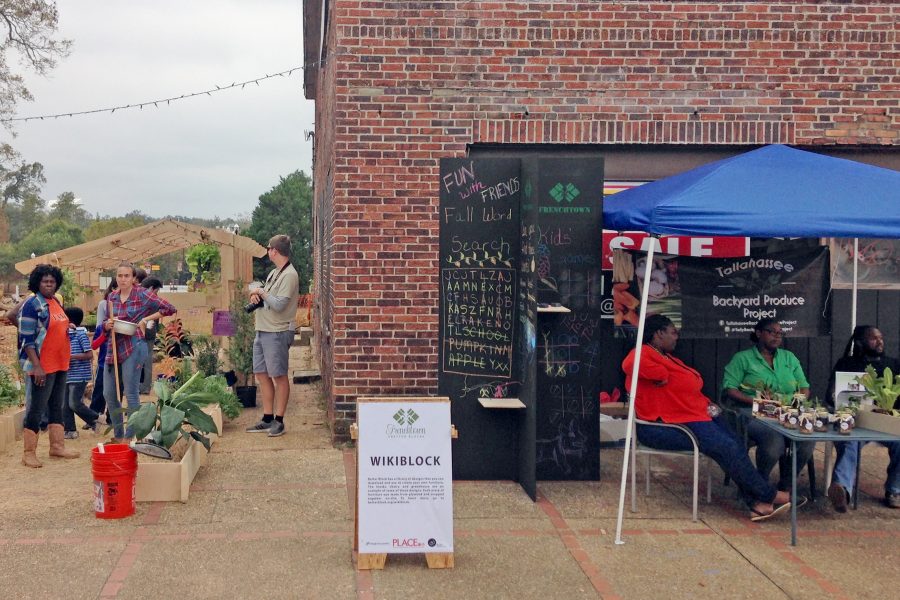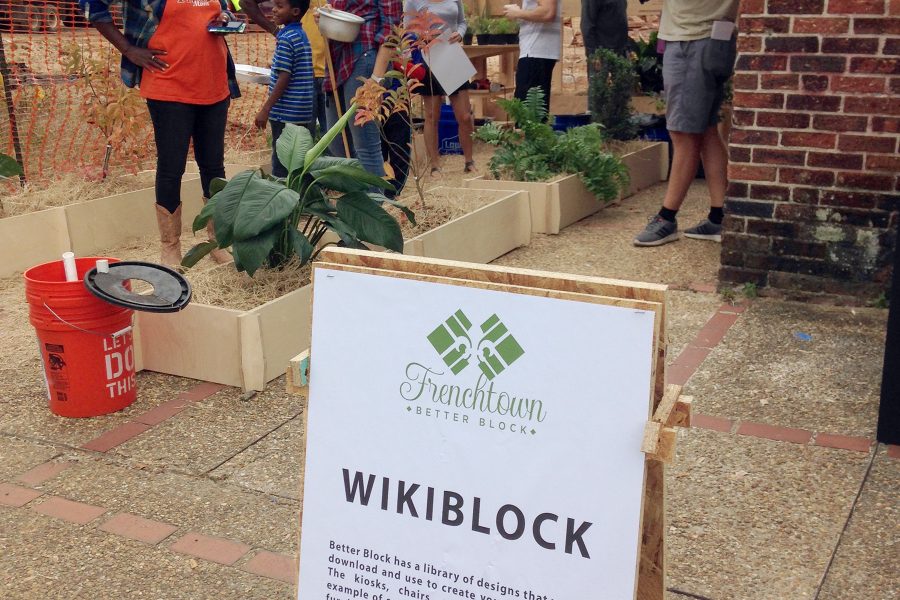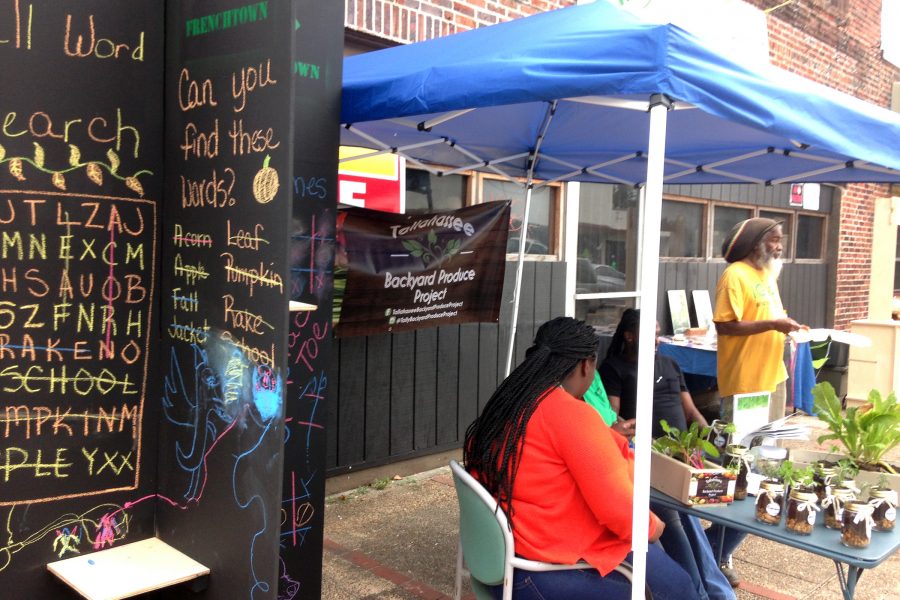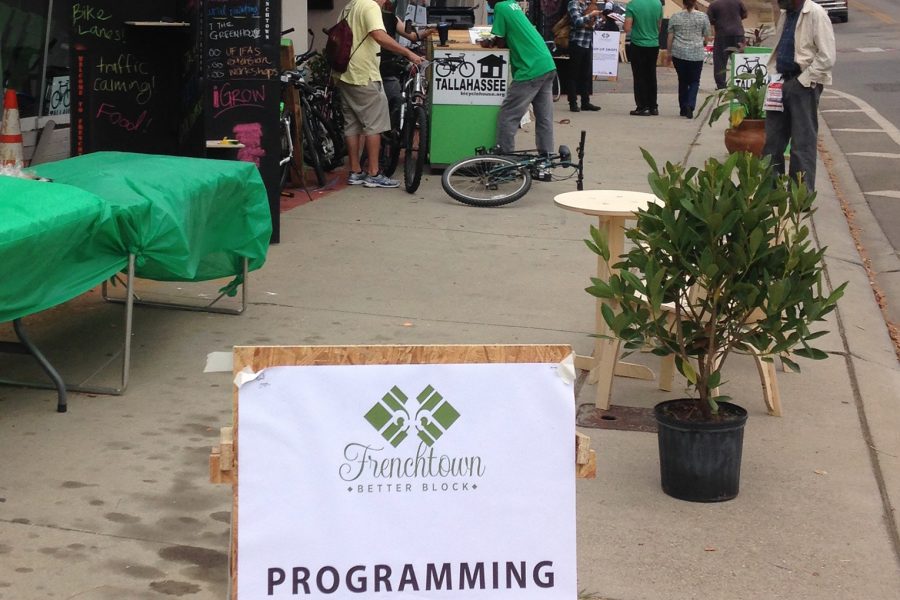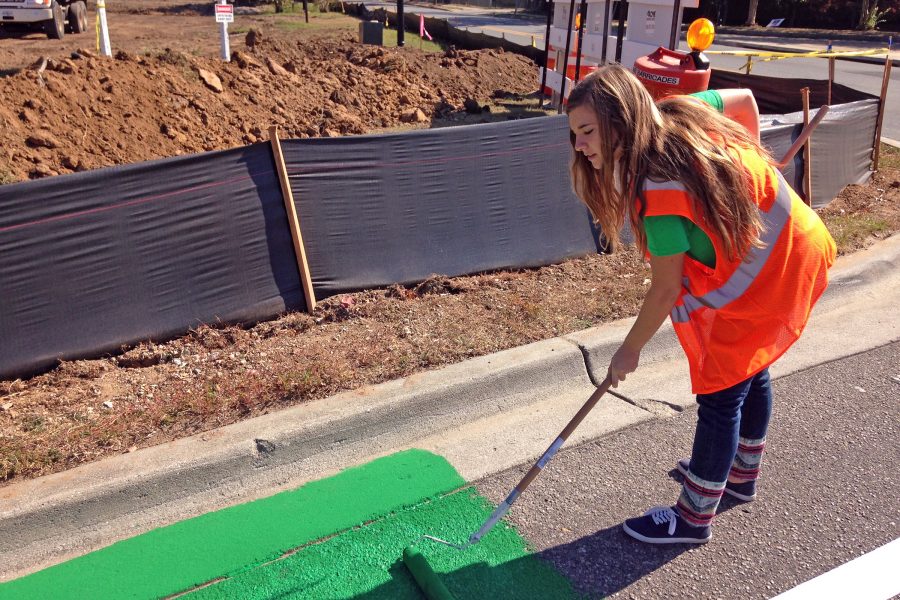
Students from the Florida State University Department of Urban and Regional Planning (DURP) unveiled the fruits of their efforts to transform the historic Frenchtown Neighborhood in Tallahassee at a special event Nov. 18-19.
The Better Block Tallahassee project — held at the intersection of Macomb and Brevard streets and Old Bainbridge Road — was designed to demonstrate to city and local policymakers how economic development and infrastructure improvements can create the foundations of a more pedestrian-friendly, livable and economically and socially viable area.
By making changes in that small but key location within the greater Frenchtown neighborhood, the project aimed to foster reinvestment and focus more city attention and resources on the area long time residents say was once a vibrant and thriving community.
Students in the department’s Florida Planning and Development Lab (FPDL) studio spent the fall semester taking the lead on the project — a collaboration with city agencies, urban design students from FSU, architecture students from Florida A&M University and the FSU Master Craftsman Studio and Facilities Department. The team also received input from the national Better Block Foundation.
Improvements included bike lanes, miniparks, features to increase pedestrian safety and prevent speeding, market kiosks, a greenhouse, new sidewalks, a mural and outdoor entertainment stage and the reactivation of previously closed storefronts. All of the changes were based on community input.
“We didn’t come in as experts from the city or the university telling the residents what they needed,” said FPDL Director Lindsay Stevens, a professor in the Department of Urban and Regional Planning. “The students gathered this input in a much more grassroots, boots-on-the-ground way, meeting people where they live and work, having small backyard barbecues and music events to get community feedback on what they’d like to see in the neighborhood.”
The project was initiated when FSU graduate Megan Doherty, then working at the Tallahassee-Leon County Planning Department, attended a conference and met representatives of the Better Block Foundation, a Dallas-based nonprofit that educates, equips and empowers communities to reshape and reactivate areas to promote the growth of healthy and vibrant neighborhoods. Doherty connected the foundation with the city and FPDL, which each semester takes on applied projects for real-world clients in communities throughout Florida and the region.
Florida State alum Devan Leavins, senior planner/urban designer at the city planning department and local organizer of the Frenchtown Better Block, introduced longtime residents who spoke about Frenchtown’s rich and varied history to FPDL students in August. The meeting gave the FPDL students, all of whom are working toward their master’s degrees in planning, a good basis for determining what the community loved best and missed most.
The students then gathered the input, did site surveys and traffic counts and designed the environment and its components for the weekend showcase. They also pulled together the collaborators and attracted volunteers from throughout Tallahassee. The project was a good education in urban planning as well as a valuable experience in community and partnership building.
“I’m really interested in community organizing and social equity, and it’s been great meeting community members and seeing them mobilized to own this project,” said FPDL and urban design student Melanie Marques. “Relationships are how you really find out about the heart of the community and what people really want to see.”
An urban design class taught by Assistant Professor April Jackson also contributed to the project, analyzing the neighborhood’s current conditions and creating visualizations of several options for the improvements and interventions. The options were then presented to city officials who decided which ones to implement. Students are now looking at taking their work from visualization and public demonstration to a more permanent reality.
“We don’t want this to be just a one-and-done project,” Stevens said. “The design class has come up with various additional phases, and it’s our intent to come up with funding for that. We’re excited about what we’ve accomplished, but moving forward, we see greater potential for reinvestment and revitalization in this wonderful neighborhood.”





